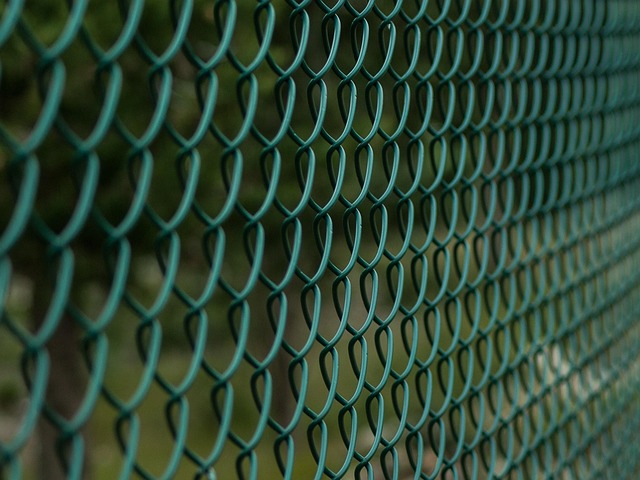In New Bedford, Massachusetts, the push for sustainable living has extended to outdoor spaces, with eco-friendly fencing materials gaining traction. This article explores the transformative potential of these green alternatives, highlighting their environmental and aesthetic benefits. We delve into the various types available, installation tips, maintenance requirements, and local efforts promoting their adoption. By embracing eco-fencing, New Bedford residents contribute to a more sustainable future while enhancing their outdoor environments.
- Understanding Eco-Friendly Fencing Materials
- Benefits of Eco-Fencing in New Bedford, MA
- Popular Options for Environmentally Friendly Fences
- Installation Considerations for Sustainable Fencing
- Longevity and Maintenance of Green Fences
- Local Initiatives Promoting Eco-Fencing in New Bedford
Understanding Eco-Friendly Fencing Materials
Eco-friendly fencing materials are those derived from renewable resources or produced with minimal environmental impact. These materials offer a sustainable alternative to traditional fences, addressing both aesthetic and functional needs while promoting ecological conservation. Common examples include various types of wood, recycled plastic, bamboo, and vegetative barriers like hedges or living fences.
Understanding the unique properties and benefits of each material is key to making an informed choice. For instance, organic woods like cedar or pine are naturally resistant to rot and pests, ensuring a longer lifespan without excessive maintenance. Recycled plastics, often in the form of composite fencing, offer durability and low-maintenance advantages while reducing plastic waste. Vegetative options not only provide privacy but also support biodiversity by attracting local wildlife. Choosing eco-friendly materials contributes to a greener New Bedford, enhancing both the beauty of outdoor spaces and their positive impact on the environment.
Benefits of Eco-Fencing in New Bedford, MA
In New Bedford, MA, eco-friendly fencing materials are transforming outdoor spaces while promoting environmental sustainability. These innovative options offer a range of benefits, from reducing carbon footprints to supporting local ecosystems. By choosing natural, recyclable, or biodegradable materials like wood from sustainably managed forests, bamboo, or recycled plastic, residents can contribute to the city’s green initiatives and create beautiful, long-lasting barriers that enhance their properties.
Moreover, eco-fencing boosts biodiversity by providing habitats for local wildlife and helps mitigate the urban heat island effect, making New Bedford’s neighborhoods cooler and more comfortable. These fences also require less maintenance over time compared to traditional options, saving residents money and reducing the environmental impact of manufacturing and disposal processes typically associated with conventional fencing materials.
Popular Options for Environmentally Friendly Fences
In New Bedford, MA, eco-conscious homeowners and businesses have several popular options when it comes to environmentally friendly fencing materials. One of the most widely chosen is recycled plastic fencing, which is durable, low-maintenance, and made from post-consumer waste. This type of fence not only reduces landfill waste but also offers a long-lasting solution that requires minimal upkeep compared to traditional wooden fences.
Another favored option is natural, organic fencing materials like bamboo or hedging plants. Bamboo fences are not only aesthetically pleasing but also highly sustainable as bamboo grows rapidly and can be harvested without damaging the environment. Hedging plants, such as holly or boxwood, provide a living, breathing barrier that offers privacy while still allowing for natural light penetration. These options not only enhance the curb appeal of any property but also contribute to a greener, more ecologically balanced New Bedford landscape.
Installation Considerations for Sustainable Fencing
When considering eco-friendly fencing options, New Bedford residents should keep in mind several installation factors. One key consideration is accessibility and site preparation; some sustainable materials may require specific ground conditions or specialized installation methods to ensure their longevity and effectiveness. For instance, certain types of recycled plastic fences need proper drainage and soil stabilization to prevent sinking over time.
Additionally, the layout and design of the fence should align with both aesthetic goals and practical needs. Proper spacing between posts is essential for structural integrity, allowing for flexibility in creating unique designs while ensuring the fence stands strong against New Bedford’s varying weather conditions. Proper installation techniques, including secure post-hole digging and proper fastening methods, are crucial to maximize the environmental and functional benefits of these innovative fencing materials.
Longevity and Maintenance of Green Fences
Green fencing materials, when properly installed, offer remarkable longevity. Unlike traditional fences made from wood or metal, which may rot, rust, or require frequent repairs, eco-friendly options like recycled plastic, bamboo, and vegetable-tanned leather are durable and weather-resistant. With minimal maintenance, these fences can withstand harsh New Bedford winters and sweltering summers for years to come. Regular cleaning and occasional inspections are often all that’s needed to keep them in top shape.
The low-maintenance nature of green fences translates into significant long-term savings for homeowners. Without the need for frequent painting, sealing, or replacement, these options provide a cost-effective solution that aligns with sustainable living practices. This not only reduces waste but also lowers the environmental impact associated with traditional fencing materials and their manufacturing processes.
Local Initiatives Promoting Eco-Fencing in New Bedford
In recent years, New Bedford has witnessed a growing momentum for eco-friendly fencing initiatives. Local organizations and residents are actively promoting sustainable landscaping practices, with an emphasis on using natural and recycled materials. The city’s commitment to environmental conservation is reflected in these efforts, as community members strive to reduce the ecological footprint of their outdoor spaces.
One notable trend is the adoption of locally sourced, organic fence options, such as wooden posts treated with eco-friendly preservatives and natural barrier materials like bamboo or recycled plastic. These initiatives not only enhance the aesthetic appeal of neighborhoods but also contribute to a healthier local ecosystem by minimizing the use of harmful chemicals. Local government bodies and community gardens have been instrumental in fostering this change, offering incentives and resources to encourage residents to opt for eco-fencing solutions.
